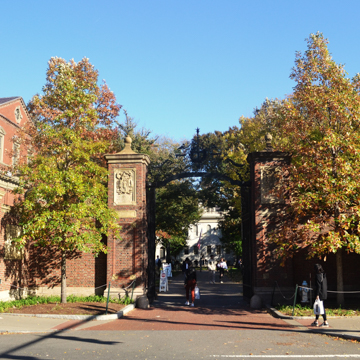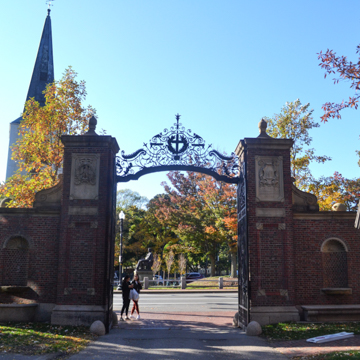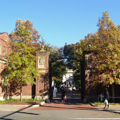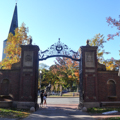In 1889, Charles McKim designed the Johnston Gate, a formal entranceway to the campus and the first of his many commissions at Harvard. The gate also was the first full-blown manifestation of the Georgian Revival architecture that would be adopted by Harvard architects through the early decades of the twentieth century. Constructed with coarse handmade brick, evoking the college's oldest buildings, Johnston Gate introduced a material, Harvard brick, which imitated handmade wood-burned brick of the colonial period, that would become a unifying feature of the campus. Other gates followed, linked by the Memorial Fence, begun in 1899, defining and separating Harvard Yard from the bustle of Cambridge. The wooden guardhouse is a postmodern design that contrasts with its brick Georgian and Georgian Revival neighbors. Rather, it subtly alludes to the Victorian buildings on the campus and the nineteenth-century residences nearby.
You are here
Johnston Gate, Harvard Yard and Guardhouse, Harvard Yard
If SAH Archipedia has been useful to you, please consider supporting it.
SAH Archipedia tells the story of the United States through its buildings, landscapes, and cities. This freely available resource empowers the public with authoritative knowledge that deepens their understanding and appreciation of the built environment. But the Society of Architectural Historians, which created SAH Archipedia with University of Virginia Press, needs your support to maintain the high-caliber research, writing, photography, cartography, editing, design, and programming that make SAH Archipedia a trusted online resource available to all who value the history of place, heritage tourism, and learning.





